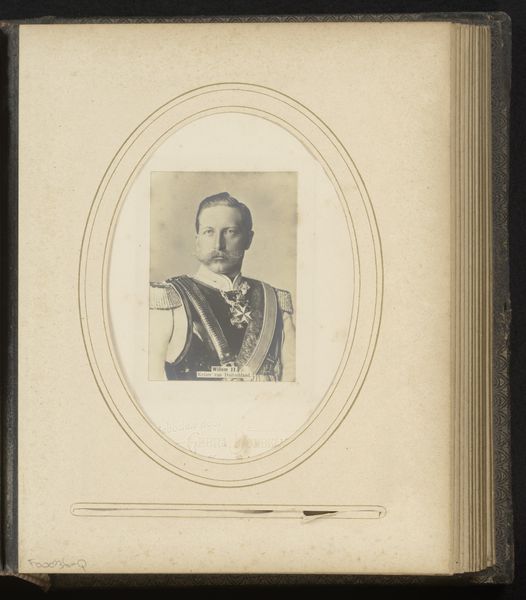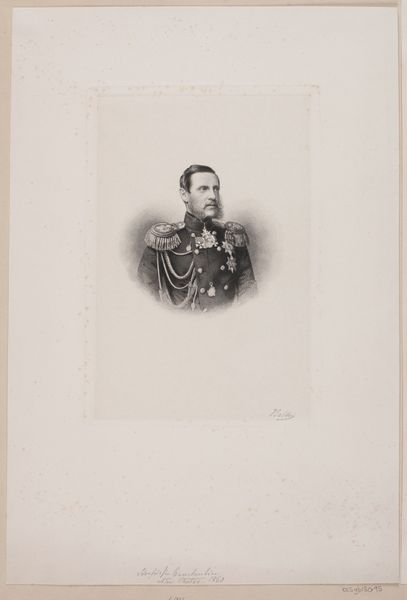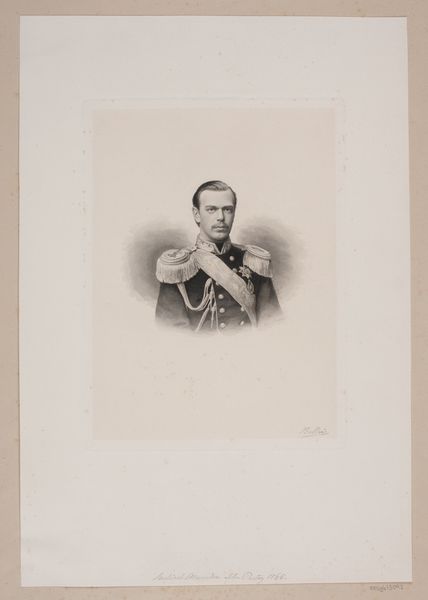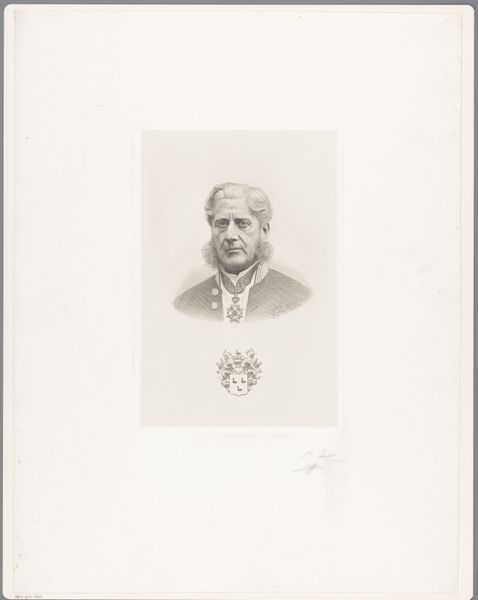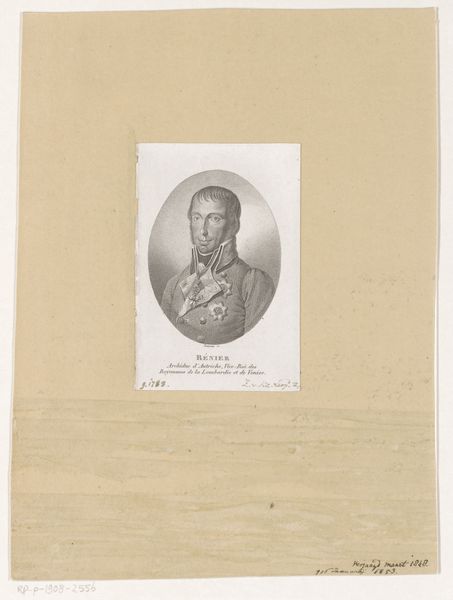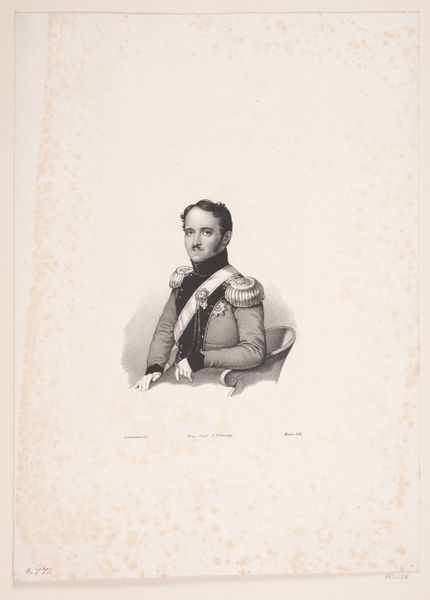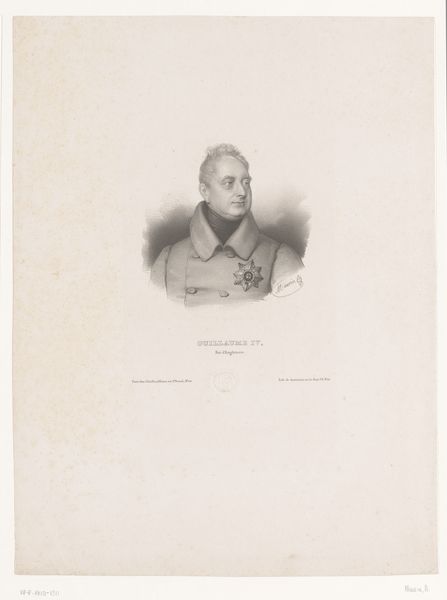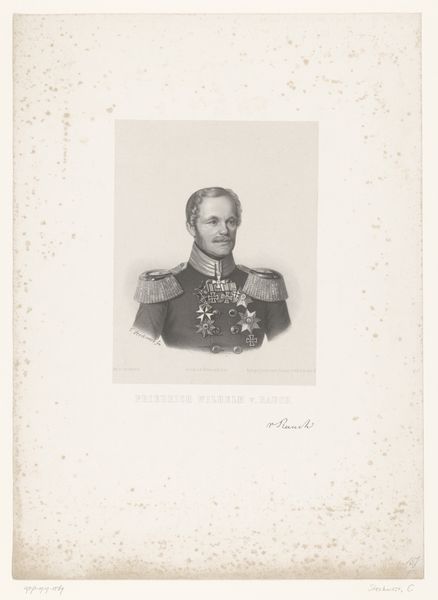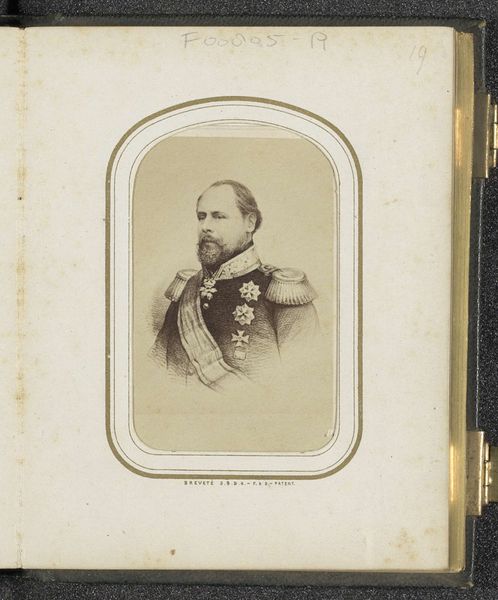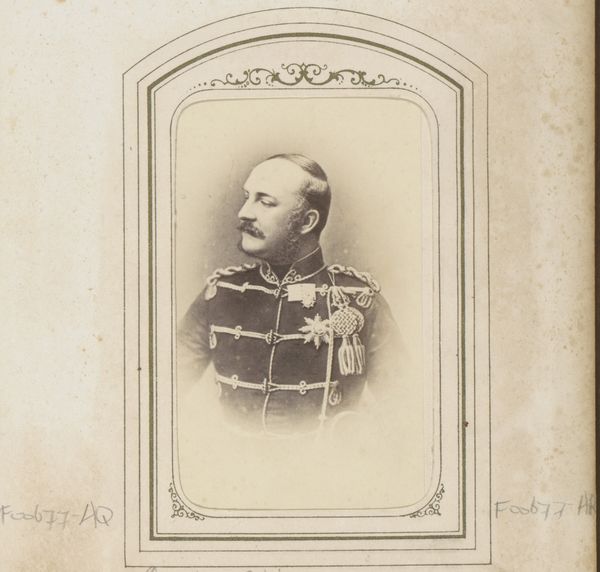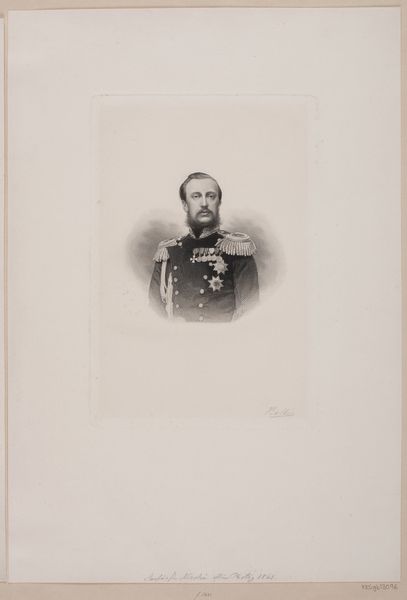
drawing, paper, ink
#
portrait
#
drawing
#
neoclacissism
#
blue ink drawing
#
old engraving style
#
paper
#
ink
#
history-painting
Dimensions: height 188 mm, width 127 mm
Copyright: Rijks Museum: Open Domain
Editor: Here we have "Portrait of Napoleon Bonaparte in a Cartouche" by Achille Désiré Lefèvre, made between 1808 and 1864, using ink on paper. I'm struck by how it resembles a mass-produced print, even though it’s a drawing. What do you see in this piece? Curator: The reproductive quality is key, I think. Notice how the precise ink strokes mimic the effect of engraving, a process central to disseminating imagery and ideology. Lefèvre is engaging with the *means* of making fame accessible. It asks, what *is* portraiture in the age of mechanical reproduction, especially considering Napoleon's deliberate use of propaganda? Editor: So, it's not just about portraying Napoleon, but about the *how* of it being portrayed? I mean the physical work of the drawing and it almost trying to not look like work, do I follow? Curator: Precisely. The 'cartouche' design suggests a collectible item, something that can be circulated and consumed. Consider, also, the labour involved in producing this, versus a printed version: what statement is being made by choosing the slower process? The work underscores a changing social landscape where even artistic skill serves mass consumption, which also changes artistic skill to suit material needs and taste. Editor: I never thought about it that way – it is really amazing how an artwork of this time becomes so political! Almost taking into account it's potential future mass use. Curator: Indeed! This seemingly simple drawing actually has an undercurrent of commentary of industrial production and material dissemination. Editor: I'll never see a portrait the same way again. Thank you.
Comments
No comments
Be the first to comment and join the conversation on the ultimate creative platform.
